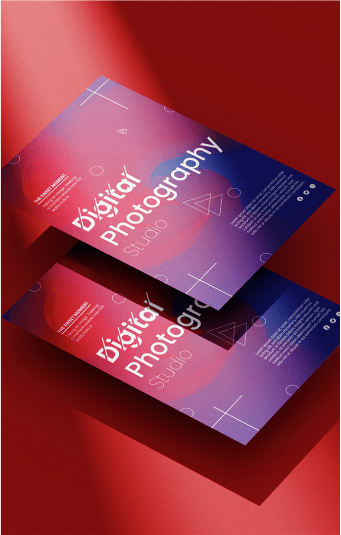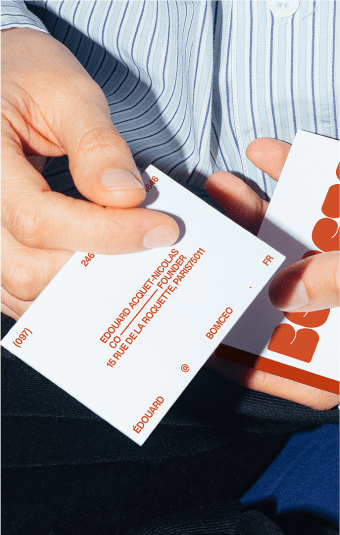Logo design is one of the most critical elements in marketing and a crucial part of a brand’s public perception. However, logo designers often fail to consider an aspect that is just as important – contextualization. In essence, contextualization refers to creating designs within the frame of the social and cultural understanding of your audience; taking into account things such as language, and colors associated with different sentiments across cultures, etc. Logo design without context can fail to achieve optimal results, leaving brands at risk of being misunderstood or misinterpreted by their target audience. So the importance of incorporating elements related to the logo’s context cannot be understated when constructing a corporate identity. Let’s look further into why contextualizing logo designs should be an integral step in every logo designer’s process.
Exploring the Power of Contextualization in Logo Design
Logo design is an incredibly powerful tool for communicating a company’s identity and creating a memorable impression. Key to this effective communication is contextualization; when used correctly, it can lend impactful emphasis to brand messages. By connecting the logo directly with the appropriate audience, context facilitates a greater understanding of logos and encourages more meaningful engagement from viewers. Contextualization, therefore, allows designers to create the most compelling logos that evoke positive emotions while easily distinguishing their client’s brand in a unique manner. Achieving context-effective visual design takes skill, so it is important to combine both technical expertise with a keen eye for nuanced meaning – logos placed in the right context can truly make all the difference!
How Contextualization the Influences Your Brand’s Identity
Crafting a successful logo design is essential for establishing your brand’s identity. Contextualization is a key part of the process to ensure that when customers look at your logo, they know instantly who it belongs to and what values it stands for. Depending on what kind of logo you create, contextualization can be present in many ways; from incorporating specific colors, shapes, or fonts that are relevant to the industry’s trends and similar to their cultural and societal norms; to creating designs that resonate with customer preferences and connects them emotionally with your business. In this way, contextualizing the logo design will allow you to establish and maintain an impactful presence in consumer consciousness, furthering the success of your brand’s identity.
Benefits of Contextualizing Your Logo Design
Contextualizing your logo design is an effective strategy to convey meaning, subtly direct the message to certain audiences, and create a lasting impression. A logo’s meaning can be amplified based on its context. It is important to understand the target audience, their needs, and preferences, as well as cultural and political factors. By using context and narrative to make a clear statement, brands are able to emotionally evoke customers’ interest in the brand’s message. This approach differentiates brands from their competitors by making the brand stand out. Better marketing campaigns and customer experiences are possible when customer needs are understood through the contextualization of logos.
Analyzing the Audience to Create a Personalized Design
An effective logo design is an essential element for the development of any brand. It serves to represent both a company and its values. Therefore, having an effective logo design that resonates with the intended target audience is critical. One effective way to create a plan for a custom logo design is by contextualizing it to meaningful emotions within the target audience they are likely to encounter. Analyzing this target audience can then help uncover key insights that inform logos beyond simply representing what a product or service is. It can also evoke deeper connections through emotion, creating a deeper understanding and appreciation of a brand or company among its users. When executed successfully through thoughtful design and research, the result is often far more powerful than any generic approach could provide.
Defining the Brand Values and Characteristics
It is important to define brand values and characteristics when contextualizing a logo design. Doing so allows designers and marketers to align the look and feel of the visual identity elements with the core message one wishes to convey. By creating a clear strategy for how this will be communicated, a business can ensure that its logo is effective in conveying its desired company message appropriately. When entrepreneurs know how they want to portray their product or service in terms of aesthetics, messaging, culture, and more, it enables them to create an effective logo design that stays true to their brand values. A well-contextualized logo design is more likely to make a strong connection with potential customers as every element emphasized fits together as part of a greater whole that accurately reflects the brand identity.
Incorporating Visual Cues and Symbols that Represent Your Brand
Getting your brand’s logo right can make the difference between creating a memorable experience for your customers and missing the mark. One of the most effective ways to create engaging, recognizable logos is by including visual cues and symbols that represent the brand’s essence. These visuals don’t necessarily need to be explicit. Rather, they can provide context that not only helps attract customers but also adds depth to the overall look of the logo. For example, a symbol of a mountain range might give an outdoor retailer’s logo an adventurous feel while still conveying important information about the company. Such as what types of products they offer or where they’re based. Visual cues and symbols can be a powerful component in helping distinguish your brand from others in its field.
Maximizing Visual Impact Through Strategic Logo Placement
An effective logo placement strategy can dramatically increase the visual impact of your branding. Knowing where to place a logo takes some trial and error, but having an idea of typical placements can make your visuals more attractive. If you understand the basics of graphic design by taking into account both practical and aesthetic principles, it will ensure that your audience will be engaged by your logo. These include the header, footer, title page, menu bar, or other side areas; however for maximum visibility, it is important to think about how a logo could become an integral part of an overall design concept. It’s also important to consider sizing and color so any competing elements do not diminish the impact of your logo or brand messaging. When done well, strategic logo placement will create outstanding visuals that are remembered by customers long after they’ve interacted with your brand.
Examples of Contextualization in Famous Logos
The renowned “swoosh” logo of Nike, designed by Carolyn Davidson in 1971, is representative of the wing of the Greek goddess of victory, Nike. The logo communicates the brand’s message of speed, movement, and athletics with a touch of professionalism. Similarly, Amazon’s logo has a cool arrow that starts with the “A” and ends at the “Z.” This means that Amazon sells everything from A to Z! It was designed by Turner Duckworth back in 2000. Both of these logos are great examples of contextualizing the brand message with a recognizable design.
Conclusion
With logo design, contextualization is key. By getting to know your audience and creating an identity that resonates with them, you can maximize the impact of your logo. Contextualization doesn’t just stop at visual cues and symbols though – proper placement of your logo is essential too! For those who are careful with the tiniest details, consider the environment your logo will be in when making a decision on what font and color it should have. As important as symbolism is, never forget that clear communication must still be priority number one. Throughout this whole journey of contextualizing your logo design, always remember to indeed contextualize its message too. No matter which routes you choose to go down when designing a logo for your brand, let this article be a helpful reminder that context matters – now get out there and make something great!







